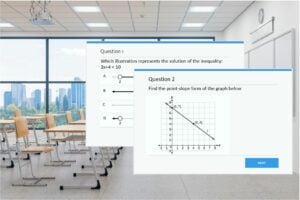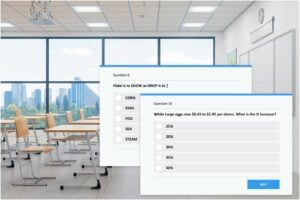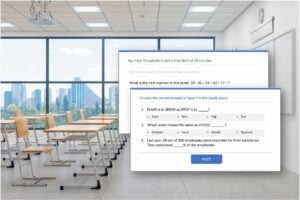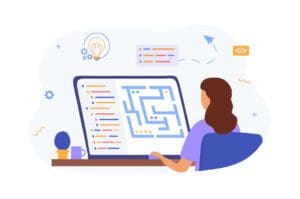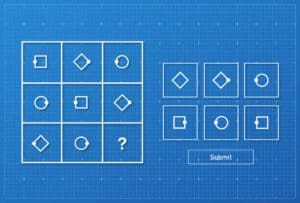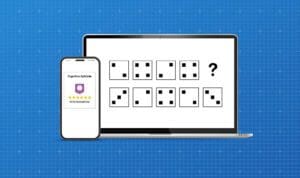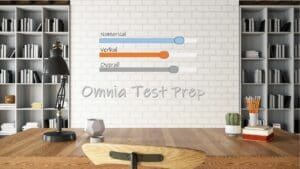Welcome to Your number series guide, made especially for increasing your performance in employers’ cognitive ability tests. Tune in for a quick and efficient run-through of number series question styles, free samples, and specific tips for tests like Wonderlic, PLI, Logiks, CCAT, and more.
Number Series: Question Breakdown
Seen on: PLI, Wonderlic, CCAT, Connector, RCAT, IPAT, ACER select, ITTS, GRT1, GRT2, and more.
Number series questions are frequently used in cognitive ability tests. In most cases, they do NOT require advanced mathematical knowledge, but rather a strong grasp of the four basic operations, roots, powers, and basic formulas (with the exception of IBM’s IPAT test). In addition, they can be solved in reasonable time frames, as they don’t Include lengthy textual instructions, which gives you more time to decipher the logic behind the sequence. Let’s quickly review the most common types of number series questions that are used in cognitive ability tests these days.
Type 1: Horizontal Sequences
This is the most popular format of number series questions in cognitive ability tests. You are asked to complete the next number/s in a sequence of 4 to 8 numbers. You may be asked to complete the last one/two missing values, or a missing value within the series. Here are some examples of number series questions that are taken from real, official cognitive ability tests. Note the variation in the number of items in each series and the location of the missing item.
16 | 18 | 29 | 49 | ?
4 | 11 | 25 | 53 | ?
29 | 41 | 53 | 65 | 77 | ?
2 | 4 | 8 | 10 | 20 | ?
4 |10 | 18 | ? | 40
2 | 3 | 1 | 4 | 0 | 5 | ?
6 | 18 | 0 | 24 | -6 | 30 | ?
6 | 3 | 12 | 6 | 24 | 12 | ? |
4 | 3 | 6 | 5 | ? | 7 | 10
16 | 18 | 29 | 49 | 78
(Source: Connector)
Look at the differences: +2 +11 +20 +29
They form a series with jumps of +9
4 | 11 | 25 | 53 | 109 (Source: PLI )
The differences are multiplied by a factor of 2: +7 +14 +28… +56
29 | 41 | 53 | 65 | 77 | 89 (Source: Wonderlic Personnel Test)
Simple rule: +12
2 | 4 | 8 | 10 | 20 | 22 (Source: SHL ITTS)
Two series: +2 in odd places, *2 in even places.
4 |10 | 18 | 28 | 40 (Source: SHL ITTS)
Look at the the differences as a series: +6 +8 +10 +12
2 | 3 | 1 | 4 | 0 | 5 | -1 (Source: SHL ITTS)
Odd places decrease by -1. Even places increase by +1.
6 | 18 | 0 | 24 | -6 | 30 | -12 (Source: Testdas )
Odd places decrease by -6. Even places increase by +6.
6 | 3 | 12 | 6 | 24 | 12 | 48 | (Source: Pilat)
/2, *4, /2, *4, …
4 | 3 | 6 | 5 | ? | 7 | 10 (Source: ACER)
Odd places -1, Even places +3
Type 2: 3X3 Matrices
This type of question is found on the Woodcock-Johnson Tests of Cognitive Abilities, Revelian’s cognitive ability test, and ACER’s number matrices.
You can reach the correct answer by working across the row or down the column. In this type of question you do not work diagonally.
| ? | 7 | 10 |
| 6 | 9 | … |
| 8 | … | 14 |
| 3 | 5 | 7 |
| 6 | – | 10 |
| 9 | 11 | ? |
How to Succeed in Number Series Questions?
- You must have a pen/pencil and scrap paper with you. Some questions are too difficult to calculate in your head.
- Jot down the differences between the numbers in the series in the following way:
Series 1 4 9 16 ? Differences +3 +5 +7 (+9) Differences
(if relevant)+2 +2 +2 - Familiarize yourself with popular types of number series logic patterns.
- Master your Number Sense through memorization – know the multiplication tables by heart.
- Practice around 30-50 number series questions. Keep reading to get references to some great free resources I found online.
More Free Number Series Practice Questions
Here’s a list of recommended number series questions to train with. they’re all free resources, but not all have answers. You’re welcome to post a question and contact us if you’re struggling with one of the questions that show up on those websites:
Become Better in Number Series with 12MINPREP
Access tens of number series practice questions with explanations and solving strategies in my cognitive ability test preparation course
For Geeks Only: Number Series in Psychometrics
If you are fascinated by the world of psychometrics and cognitive ability measurement, here are some interesting excerpts from academic literature on the subject:
The Woodcock-Johnson is one of the oldest and most reputable cognitive ability assessments. Already back in the first half of the 20th century, number series questions were used to measure IQ. When referring to the number series section of the test, the creators classified these questions as measuring Fluid Reasoning (Gf):
Number Series : Representation and manipulation of points on a mental number line; identifying and applying an underlying rule/principle to complete a numerical sequence
(Mathematics knowledge Quantitative reasoning )Number Matrices: Access to verbal-visual numeric codes; transcoding verbal and/or visual representations of numeric information into analogical representations; determining the relationship between/among numbers on the first part of the structure and mapping (projecting) the structure to complete the analogy.
It appears that the ability to solve number series questions relates to number sense. Case (1998) defined number sense as:
Students with good number sense can move seamlessly between the real world of quantities and the mathematical world of numbers and numerical expressions. They can invent their own procedures for conducting numerical operations. They can represent the same number in multiple ways depending on the context and purpose of this representation. They can recognize…number patterns.
And now look at what Russell Gersten and David J. Chard had to say about number sense:
Number sense is facilitated by environmental circumstances…the environmental conditions that promote number sense are, to some extent, mediated by informal teaching by parents, siblings, and other adults.
(Source: Number Sense: Rethinking Arithmetic Instruction for Students with Mathematical Disabilities Russell Gersten, David Chard, First Published April 1, 1999, Research Article)




